Day 5
Early in the morning, hoping to catch the sunrise, I climbed up to the viewing platform of our remarkable hotel, built among the rocks, in some places both inside. The view from there was stunning, but the sun was late, struggling to rise from behind the clouds that covered the horizon.

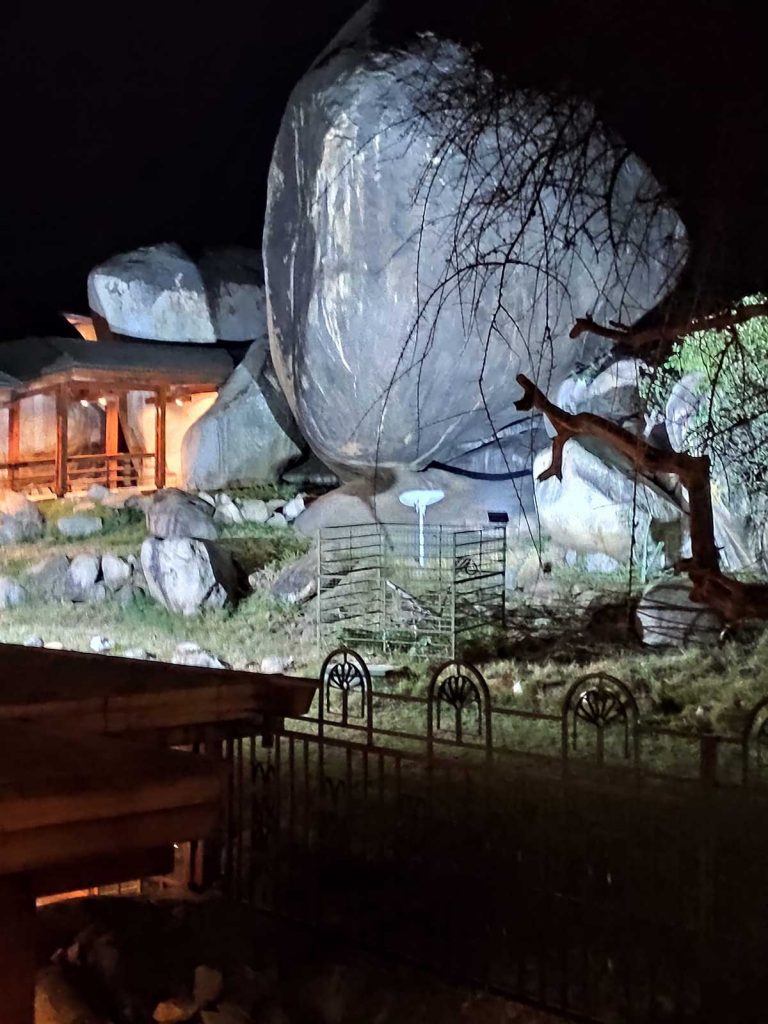
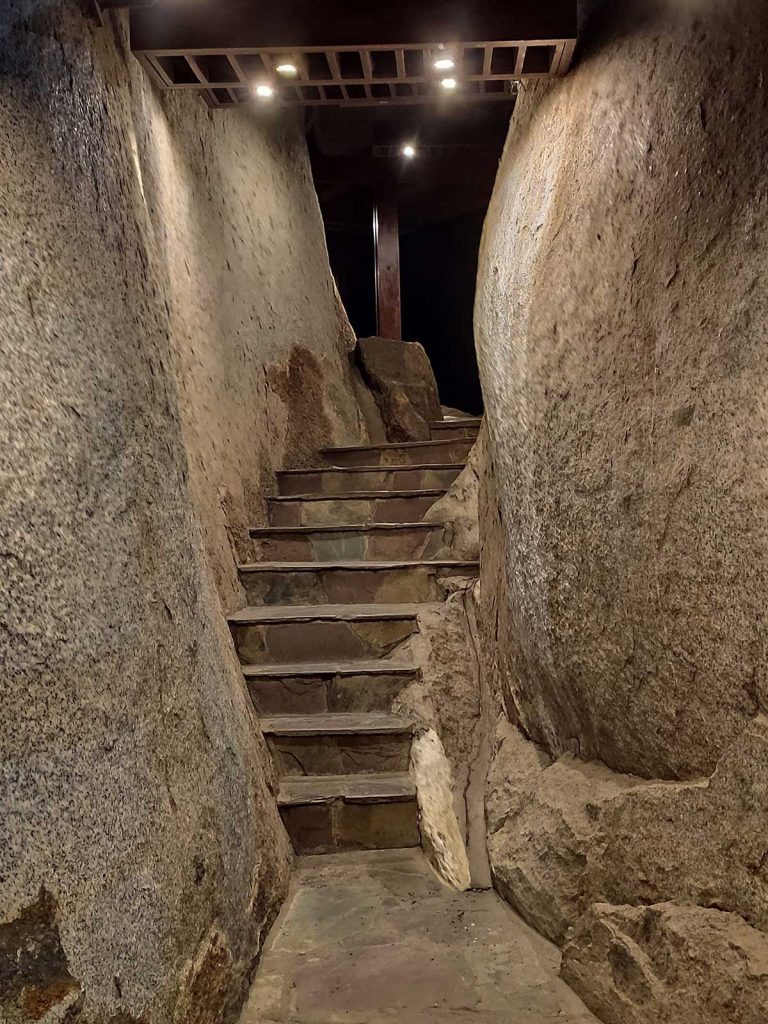
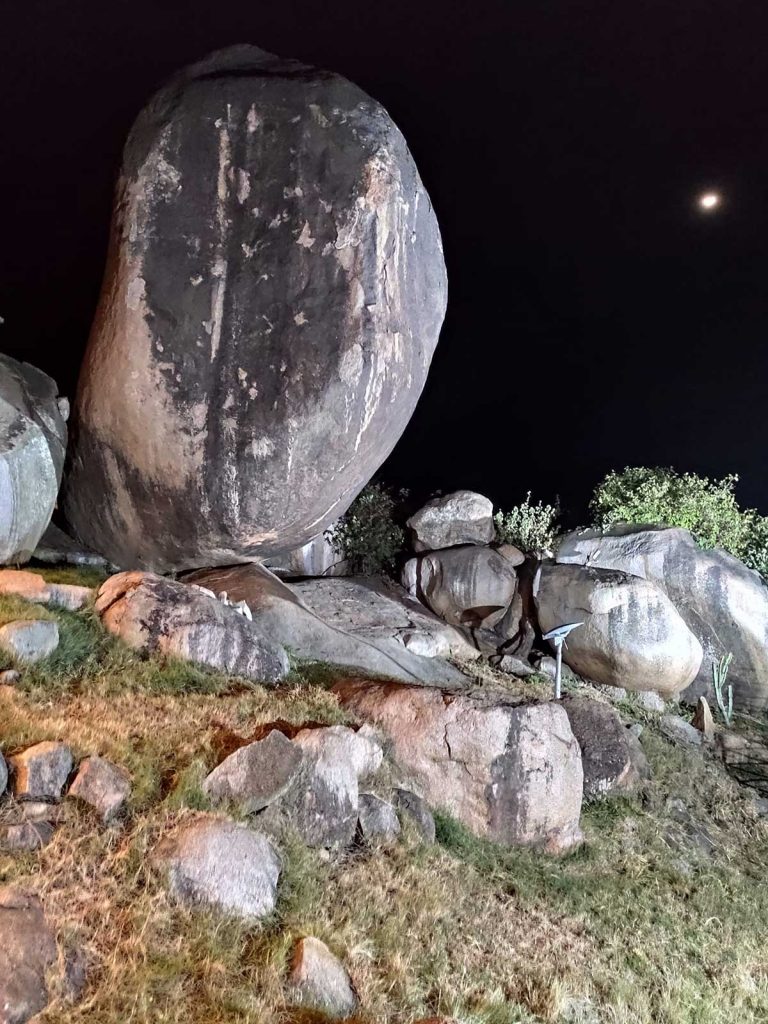
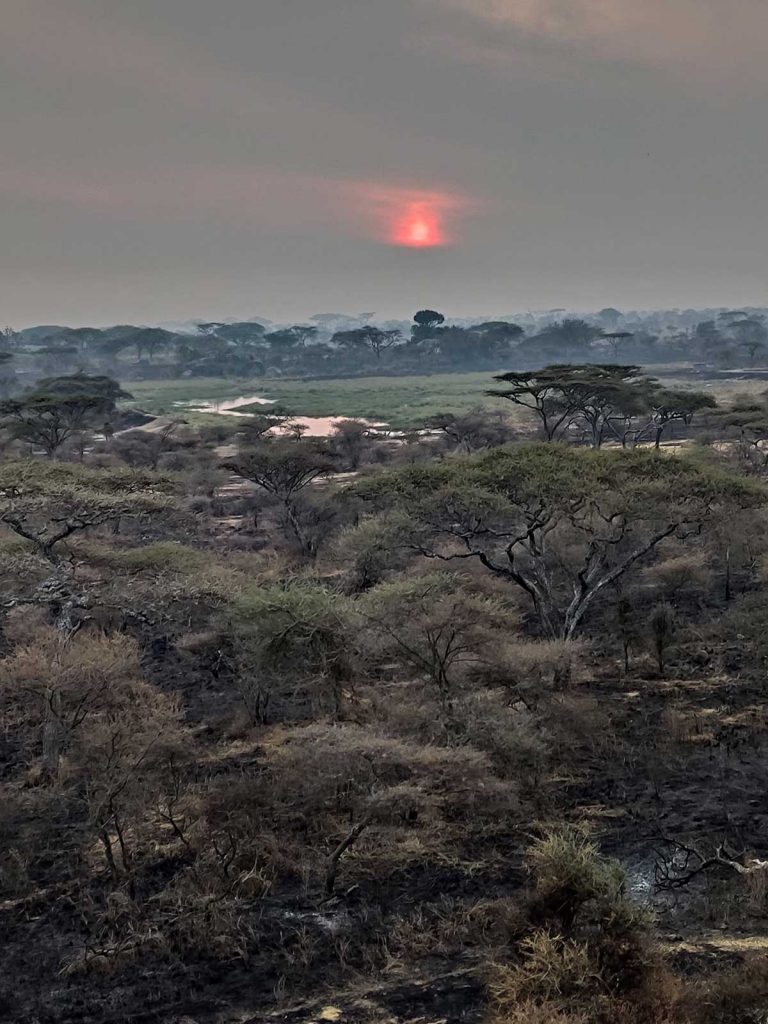
During breakfast, we saw several hot air balloons floating in the distance. We wouldn’t mind taking a ride in one, but the price—$600—makes it a bit out of reach. Setting off on our “hunt,” we head toward a spot where lions can often be found.
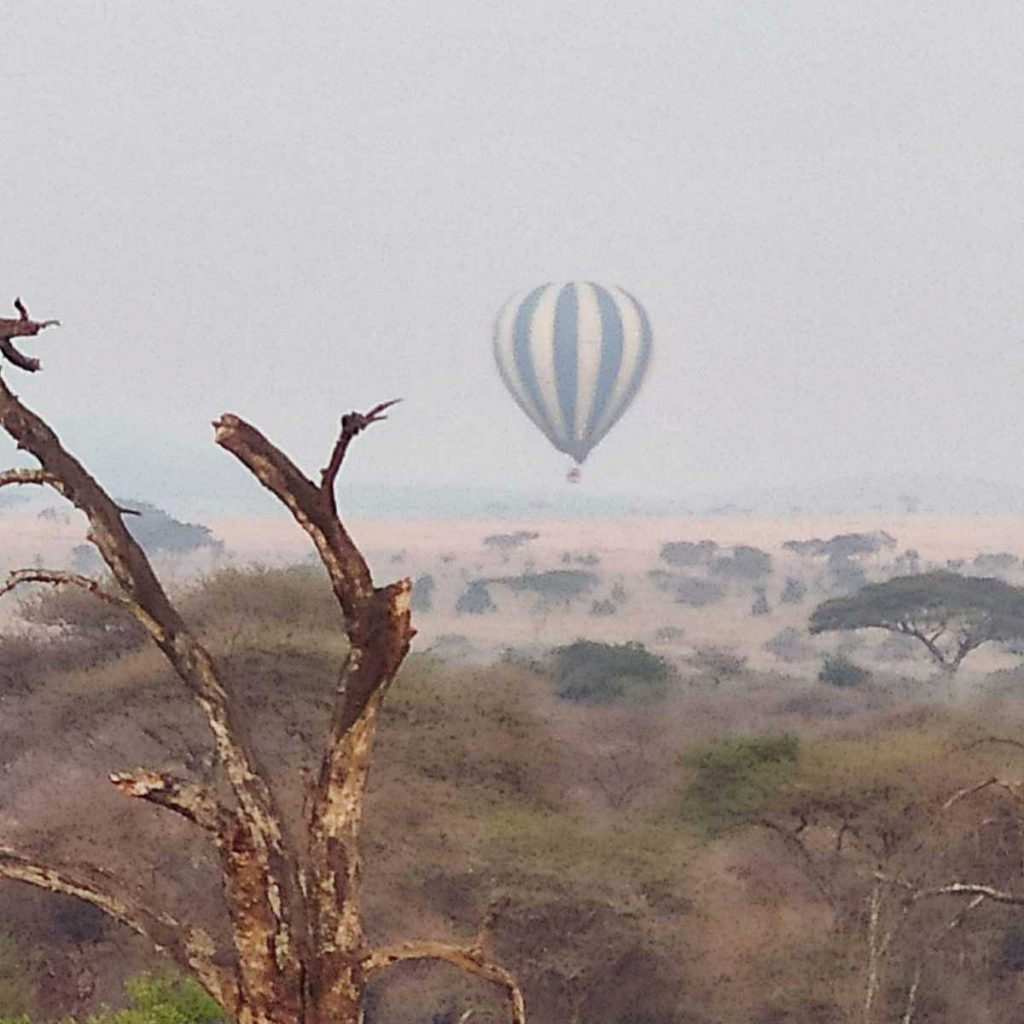
As we drive, we notice a group of about thirty vehicles gathered in one spot. They wait. And wait. And wait some more. Finally, one of the drivers points at something. Looking closely, I spot a yellow patch in the grass. That’s good enough for us—we move on. Another group of cars waits in vain for a cheetah to appear. At the next stop, we manage to glimpse two lionesses in the distance before they disappear into the tall grass. A little further along, we find a lioness sleeping on her back, all four paws in the air. At another stop, we use binoculars to spot a lion’s head poking out of the grass. We joke that, piece by piece, we’ve seen enough today to put together a whole lion.
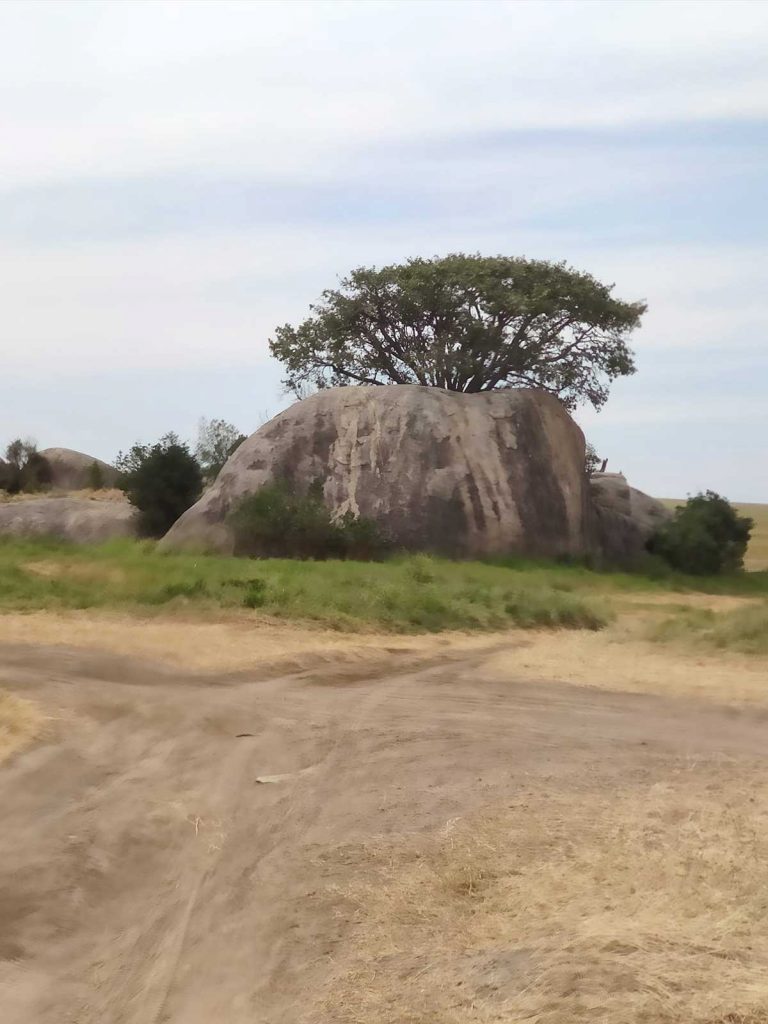

Finally, we leave this area and head to the eastern part of the Serengeti, where we haven’t been yet. Along the way, we occasionally spot different species of gazelles, zebras, and a lone ostrich. A group of mongooses dashes across the road and disappears into the grass.
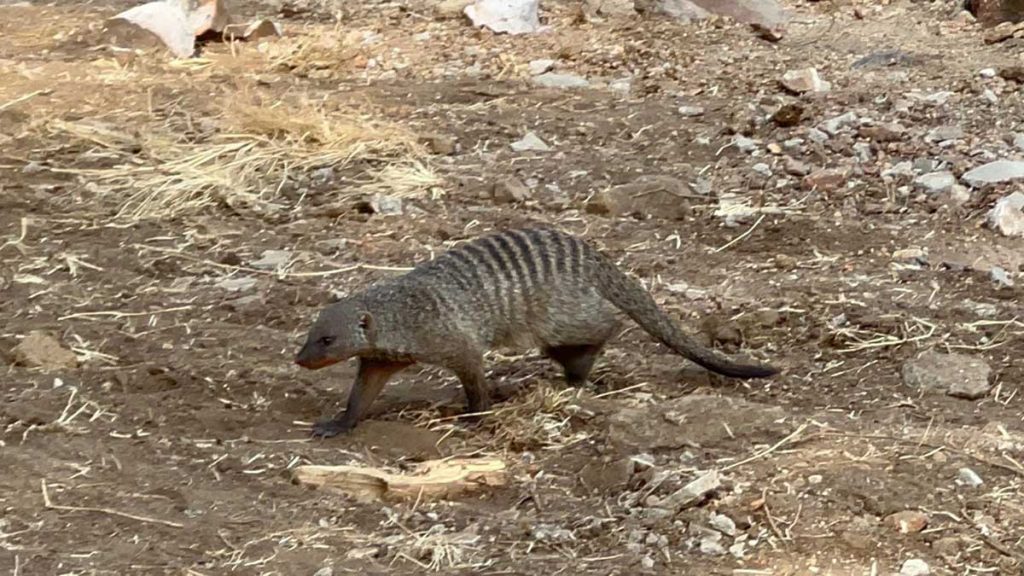
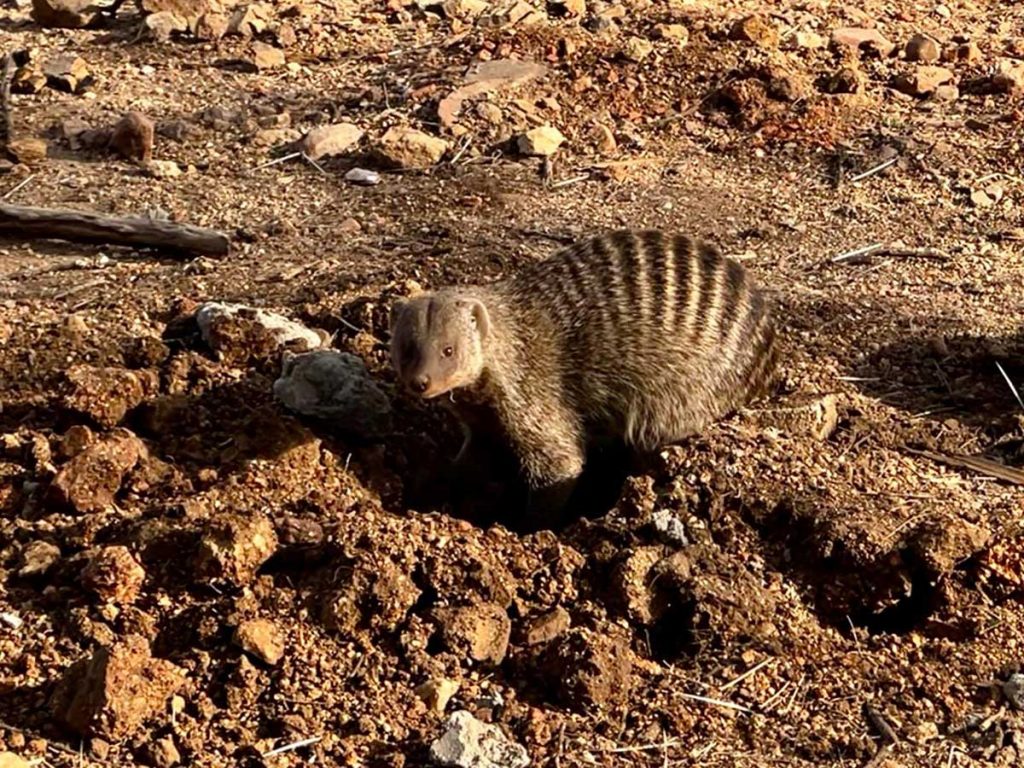
For a long time, we drive through an utterly barren landscape, flat as a table, without a single tree. The only features breaking the monotony are massive rock formations scattered across the land, sometimes resembling ancient ruins. Trees manage to take root in the cracks of these rocks – something they can’t do in the open plains due to the hard ground beneath the thin topsoil. And then luck! In the shade of one of these rocky outcrops, a lioness dozes with four rather large cubs, about six months old.
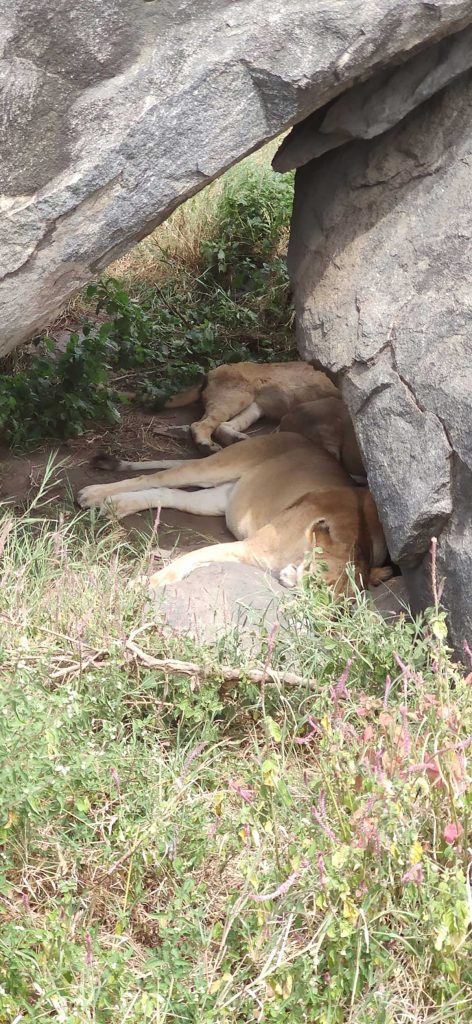
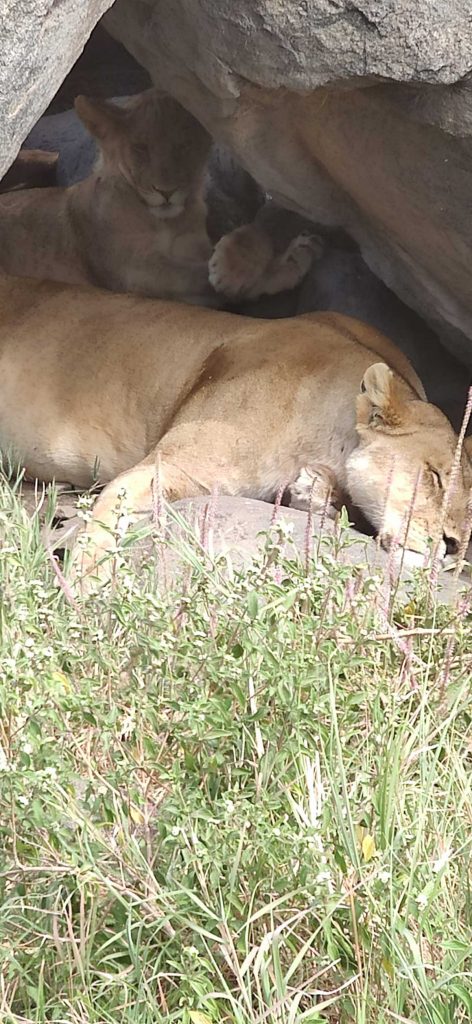
Vehicles circle the rocky hill, approaching from all sides. We manage to get within three meters of two of the cubs, looking straight into their eyes. Their gaze is completely indifferent. Ours, however, is filled with excitement! The cubs stand up, lie back down, and we just keep watching, unable to tear ourselves away. This is the highlight of the day. Reluctantly, we leave the lions, and our driver speeds toward the park exit.
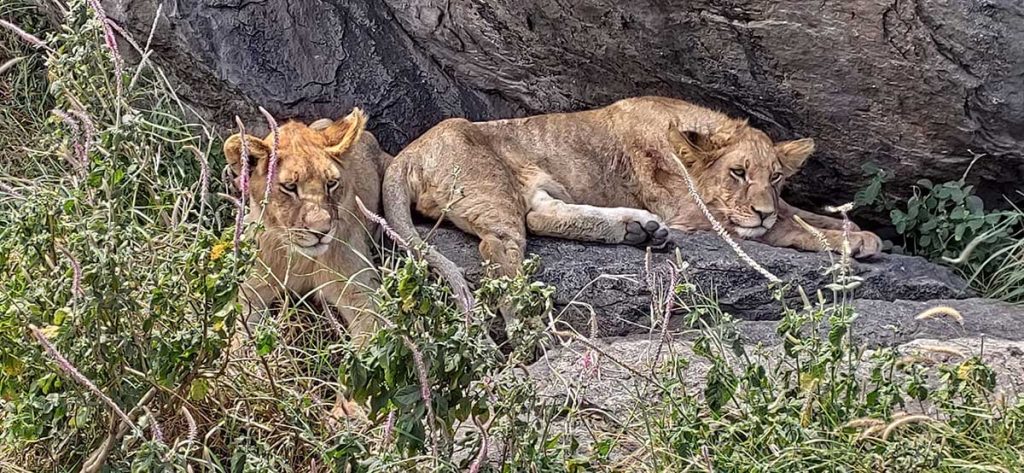
We’ve decided to change our itinerary and skip another night in the Serengeti, opting instead to stay outside the park. This will free up time in the coming days and allow for a relaxed visit to a tribe that speaks in click sounds. But the journey is long, and we must hurry.
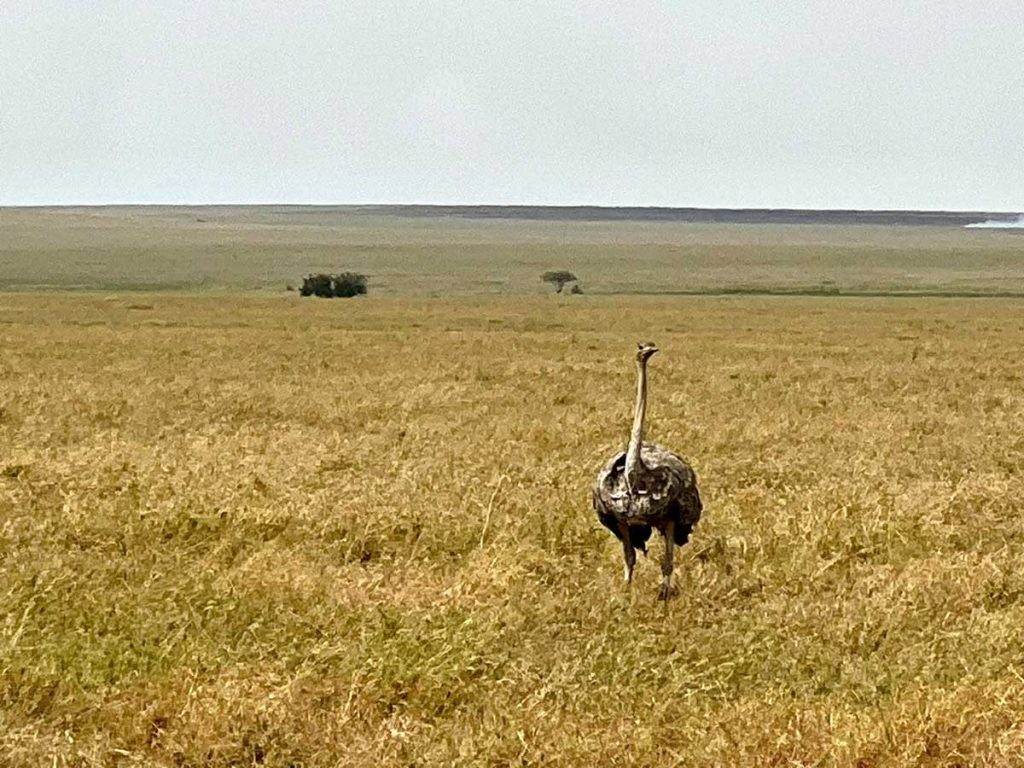
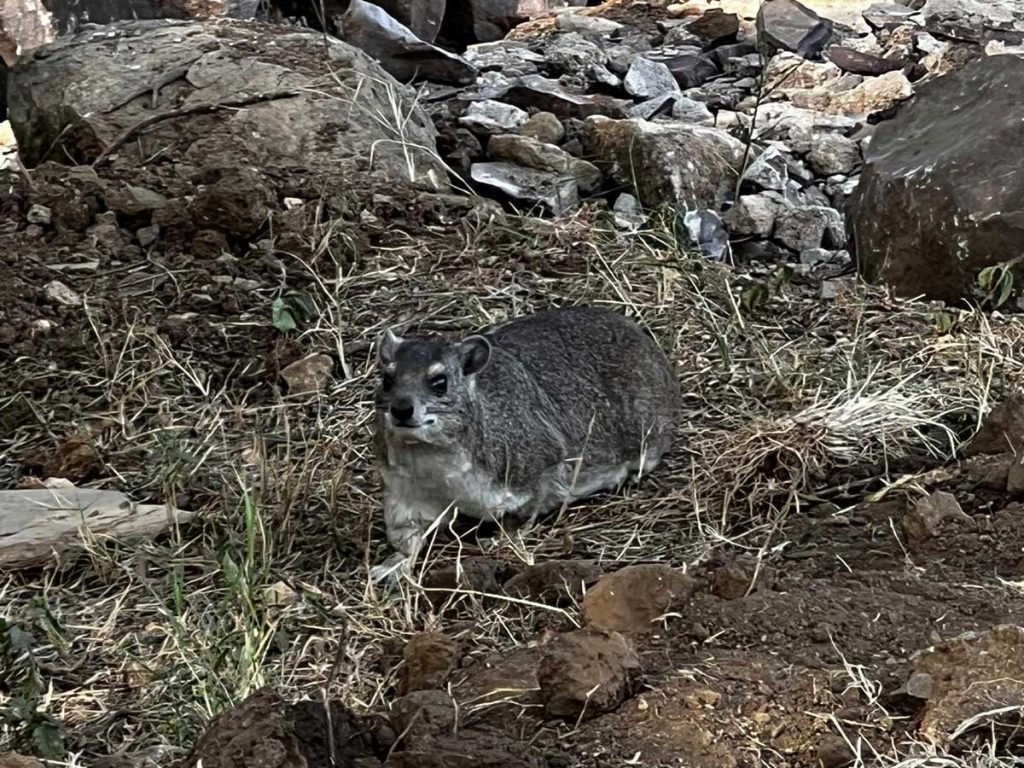
On the way, we stop at a viewpoint for one last look at the magnificent Ngorongoro from above. We exit the park at 17:56, just four minutes before the gate closes for the night. At the hotel, we are greeted with warm towels and fresh juice. They wipe the thick layer of dust from our luggage, while we head off to wash it off ourselves and shake it from our clothes. The main goal of our safari, exploring the wildlife reserves, has been completed.
Day 6
After saying goodbye to the friendly and hospitable staff of our hotel, we set off to visit two primitive tribes.
The first tribe we visited was the Hadzabe, who live near Lake Eyasi. They are also known as the Bushmen. This is one of the few remaining hunter-gatherer tribes in the world, whose way of life has remained virtually unchanged for the past 10,000 years. Their contacts with the outside world began less than 60 years ago. Today, visiting tourists provide them with a valuable source of income.
We contributed to their well-being by donating 50,000 Tanzanian shillings, equivalent to twenty dollars. A guide/translator accompanied us, as the Hadzabe speak only their native language, which includes distinctive clicking sounds.
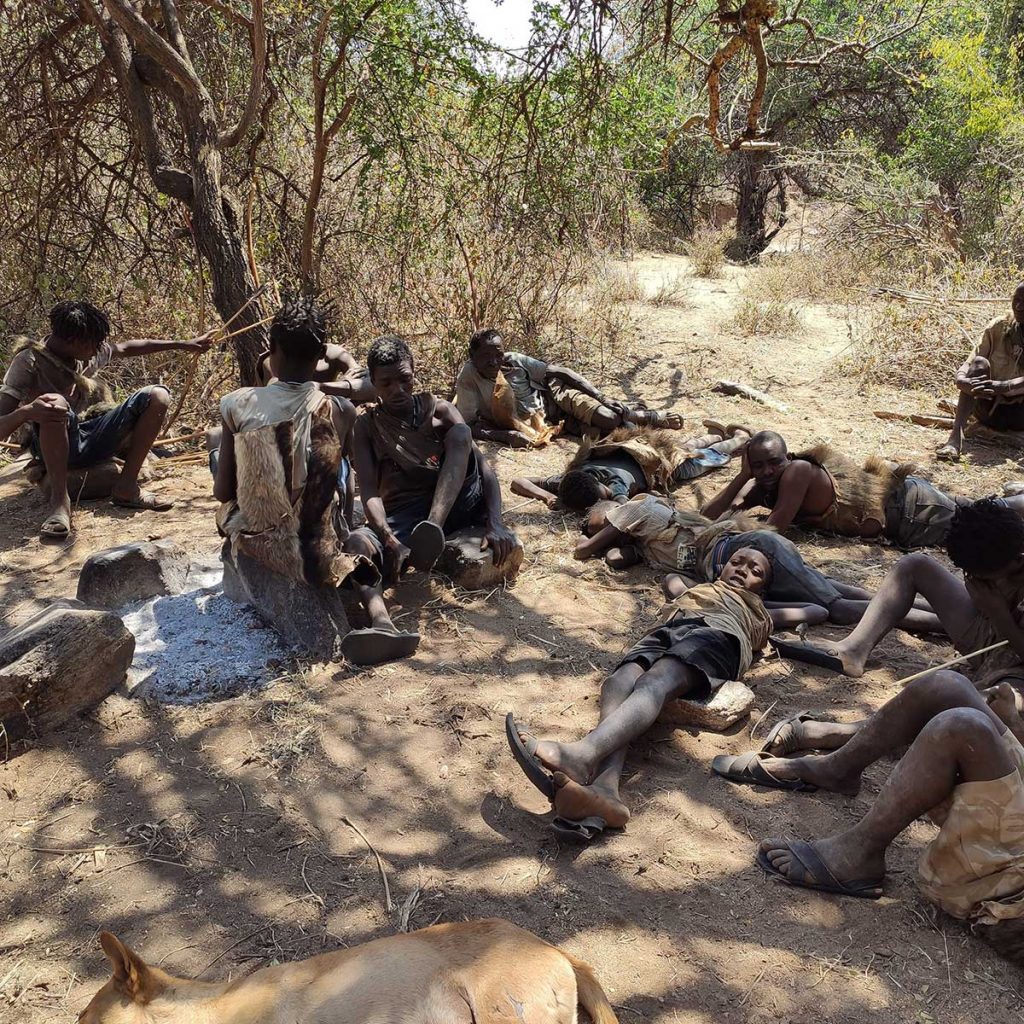
Walking into the grove where a group of Hadzabe tribesmen awaited us, we had a truly unique feeling—one possible only when encountering something entirely unfamiliar, something extraordinary. It felt as if we had stepped out of a time machine.
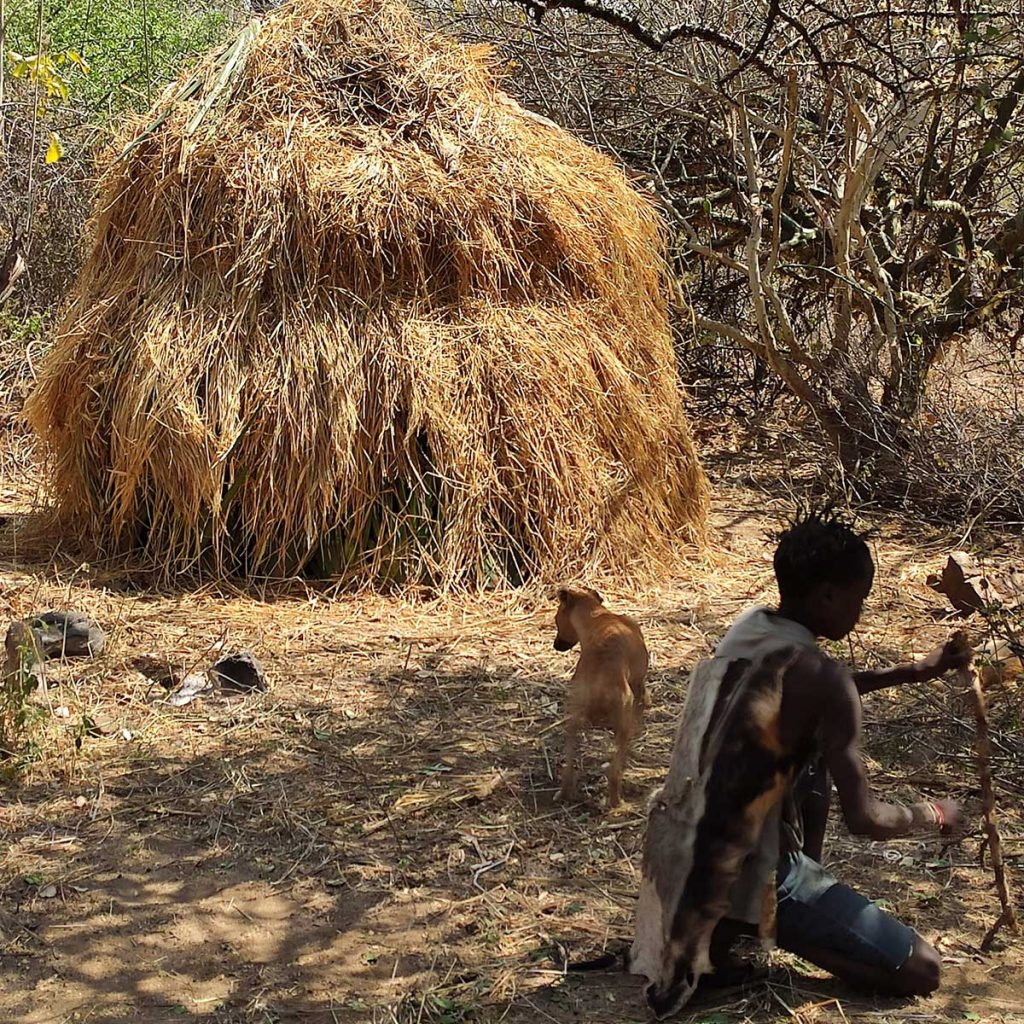
The Hadzabe have become quite skilled at welcoming guests. One young man took their primary weapon—a bow and arrows—and began an expressive demonstration, explaining the purpose of each arrow while acting out hunting scenes. He also showed us how to start a fire by rubbing two sticks together. His attempts to teach us how to make fire or mimic the clicking sounds of their language were unsuccessful. We wouldn’t last long here.
Afterward, the tribesmen demonstrated their archery skills, hitting targets with pinpoint accuracy. They also gave us a lesson, and our arrows didn’t land too far from the mark. We then met their women and children, who spend their days away from the men. The visit ended with a traditional communal dance, accompanied by singing, in which both the hosts and guests took part. It was an amazing experience.
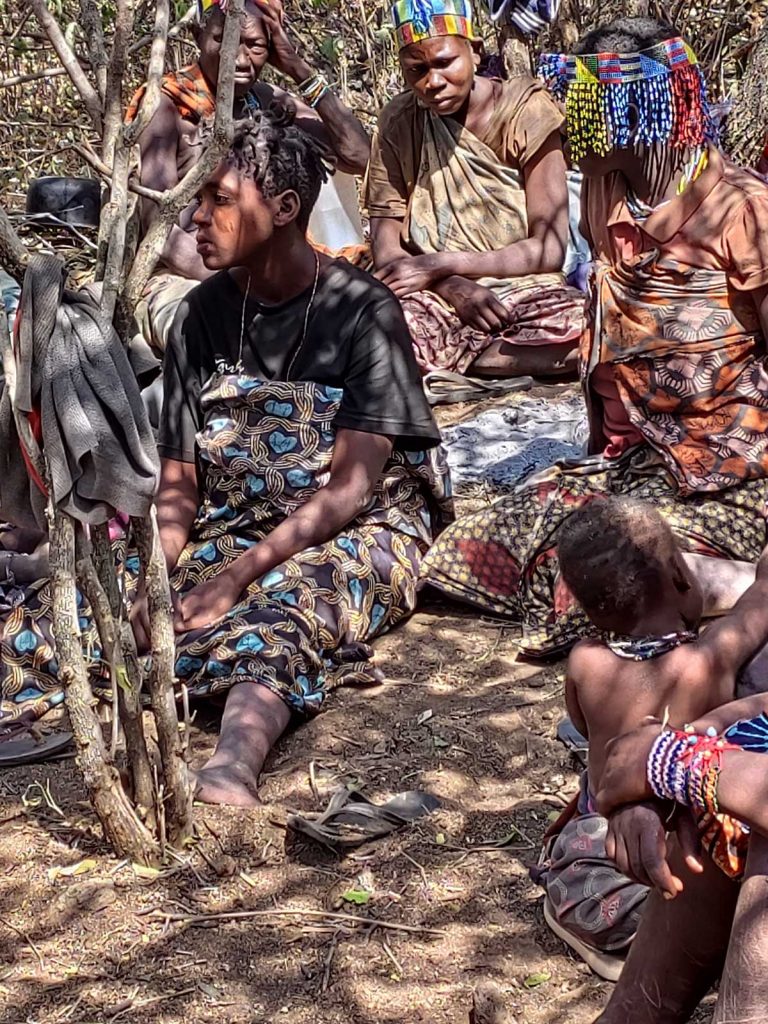
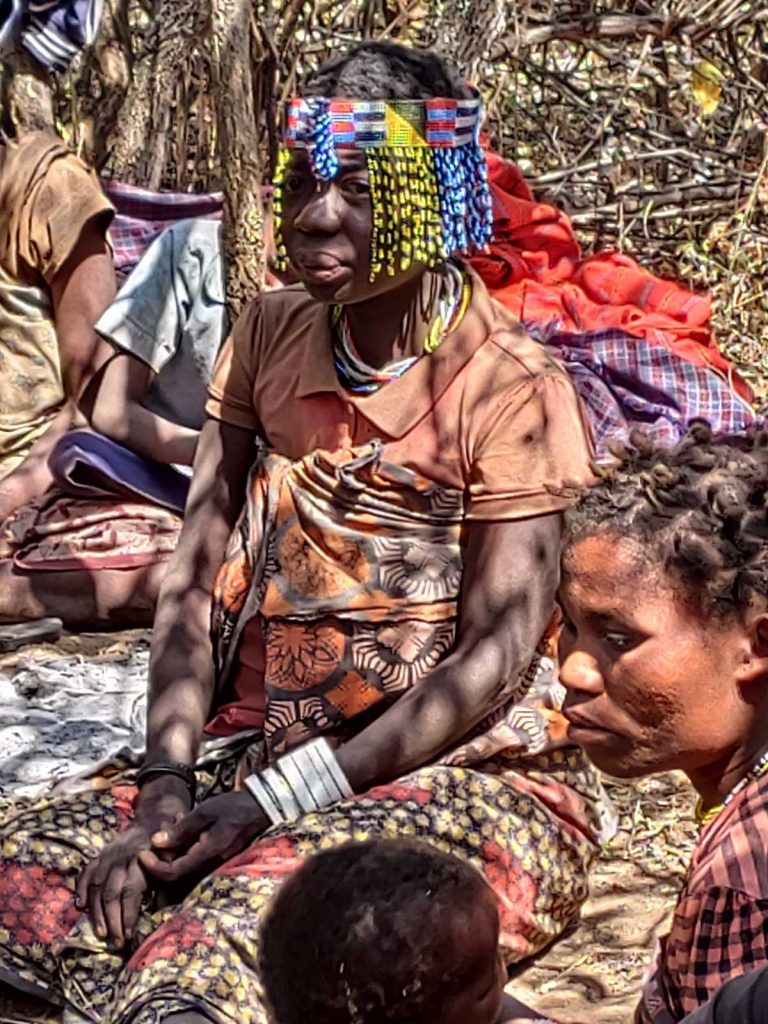
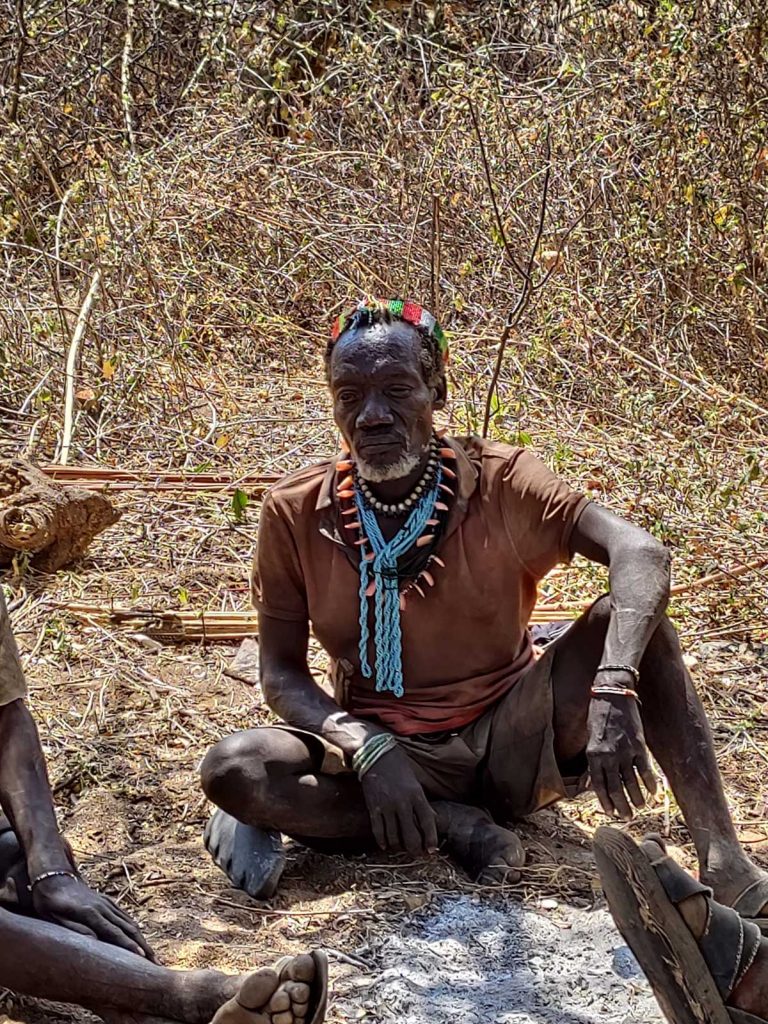
From the Hadzabe, we traveled to a nearby tribe—the Datoga, skilled blacksmiths who provide the Hadzabe with metal arrowheads. The Datoga do not charge visitors for meeting them, but they do sell well-crafted brass bracelets, arrowheads, and knives in wooden sheaths. Their craftsmen demonstrated the process of smelting and forging metal, while the women showed us how they grind corn. We contributed to their economy by purchasing ten bracelets and a knife and, in turn, demonstrated our bargaining skills.
After another picnic in nature, we embarked on a long journey to our hotel in Arusha, making a stop at a massive souvenir shop along the way (where prices were sky-high). As a result, we arrived at our accommodation close to 9 PM.
Day 7
And so, my unexpected journey to Africa comes to an end. This morning (well, late morning, at 11 AM), we were taken to the so-called Cultural Center, housed in a beautiful modern building. Actually, it’s a vast art gallery where visitors can purchase works by local painters, sculptors, woodcarvers, weavers, and more. The prices, however, are aimed at the wealthy.
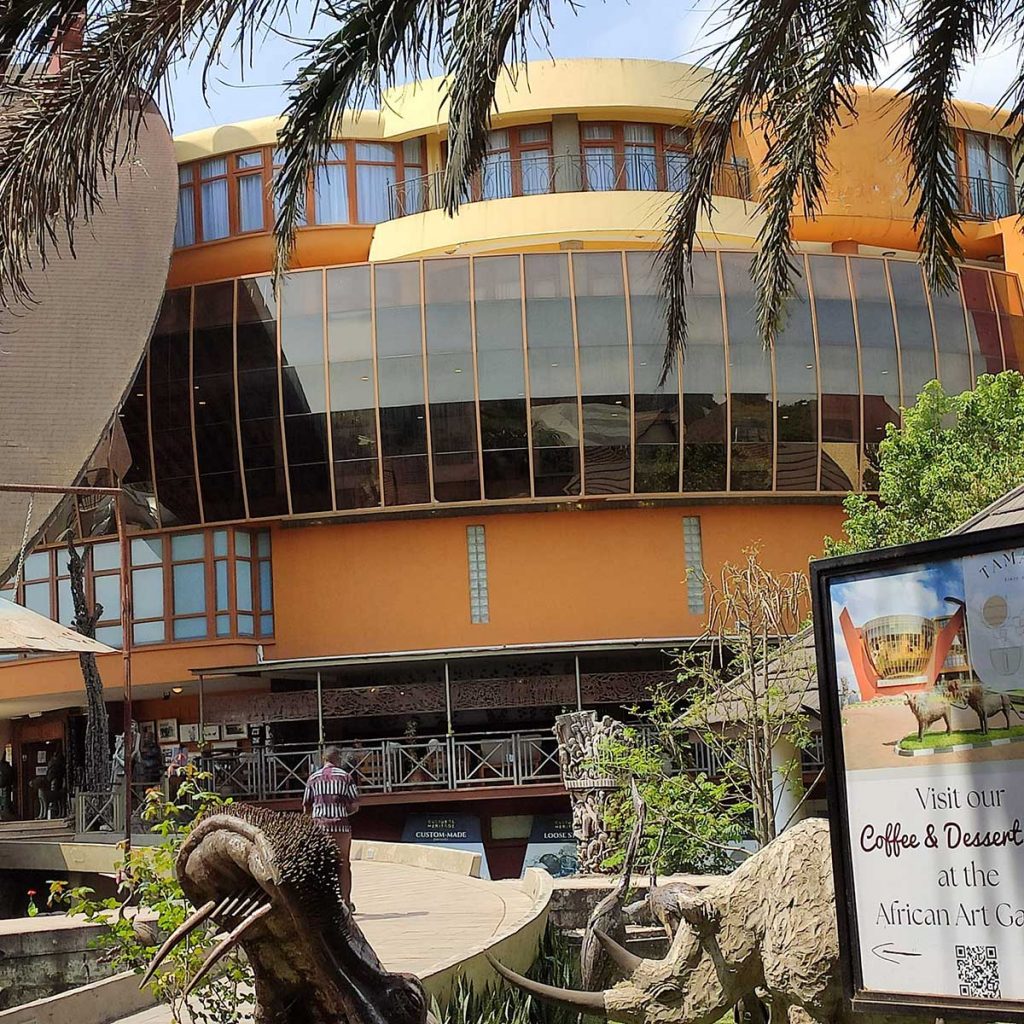
Nearby, there’s an enormous souvenir shop with slightly lower prices than elsewhere. At the entrance, visitors are greeted by a painted tribesman and a traditional music ensemble: the place is well-marketed. There are also various pavilions selling beadwork, semi-precious stones (although I would call Tanzanite, given its price, a high-precious gemstone), textiles, souvenir-style clothing, as well as a restaurant and café.
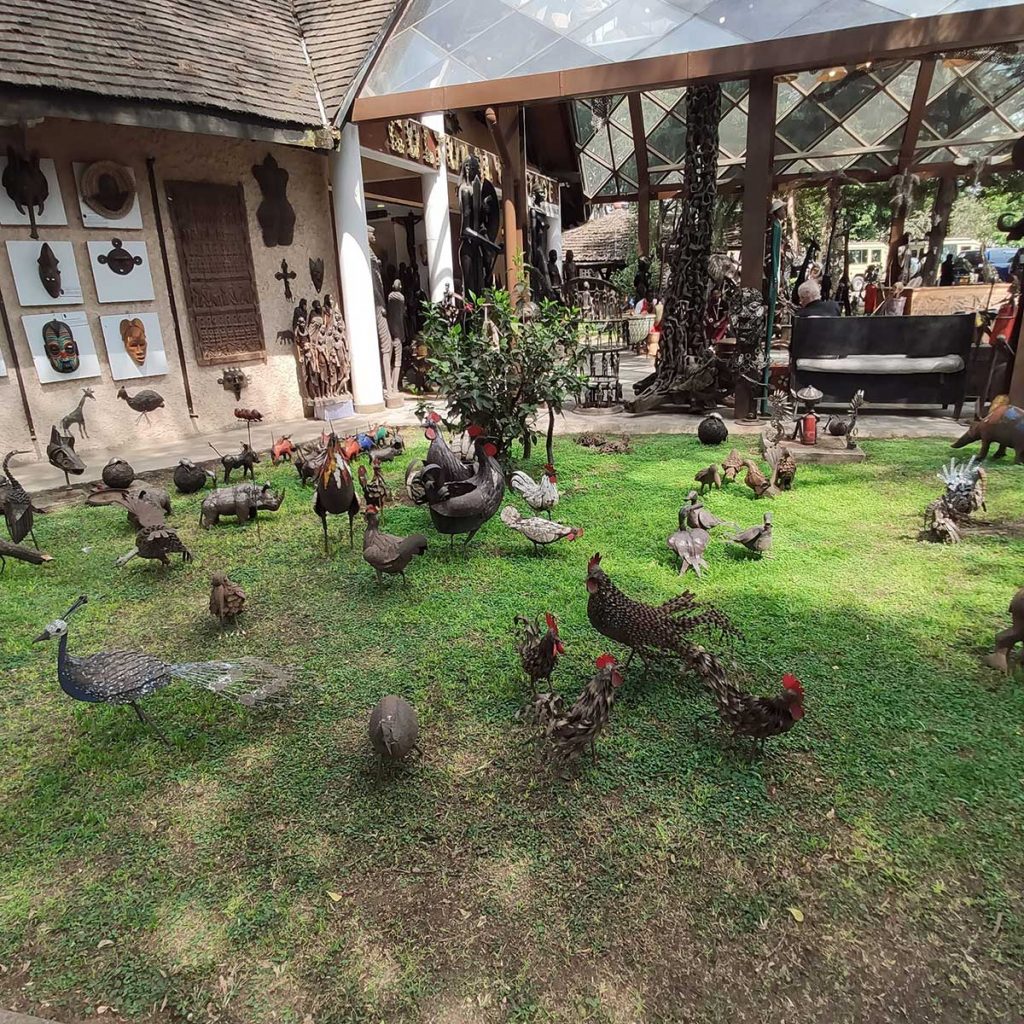
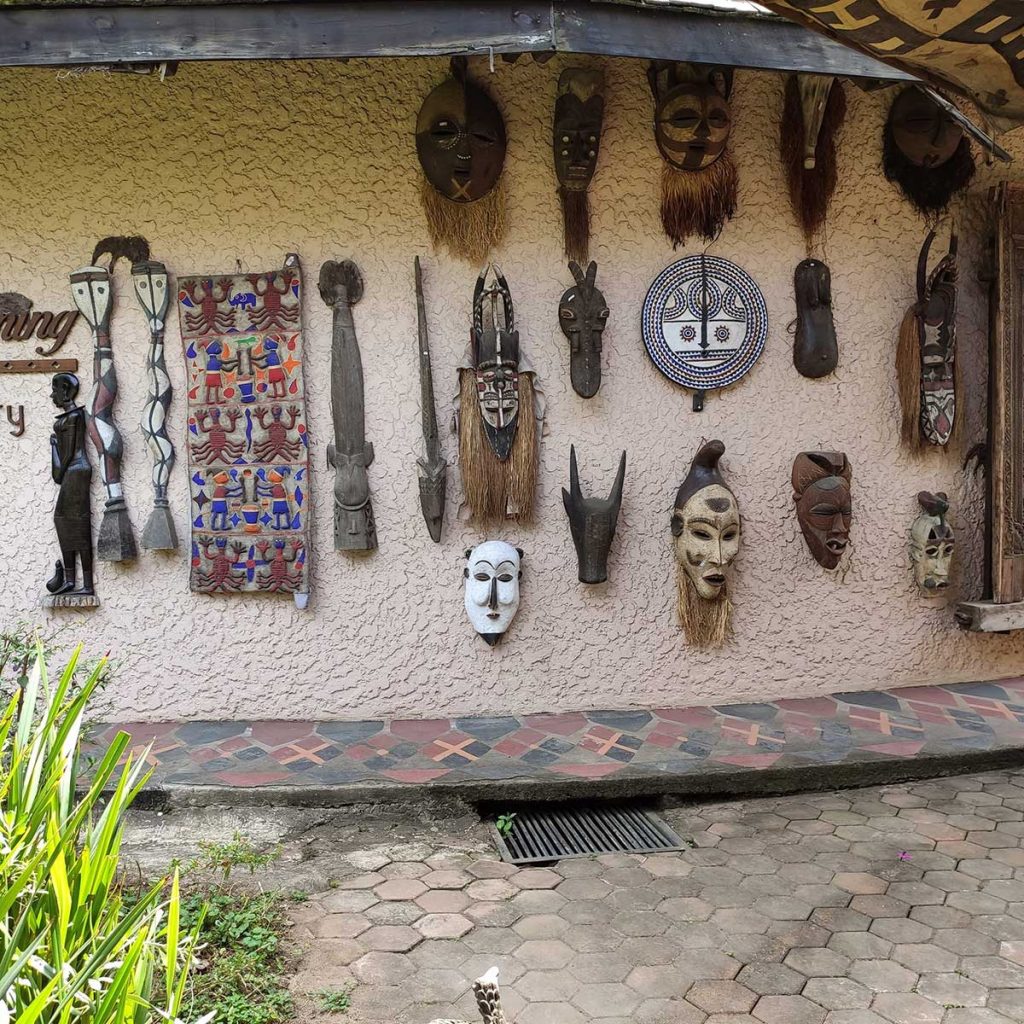
But what impressed me most were hundreds of sculptures and figurines of animals and people, displayed individually and in groups, scattered across the entire complex. They were crafted with great skill and often with a sense of humor. I wanted to photograph everything and take it all with me. One could easily spend an entire day here.
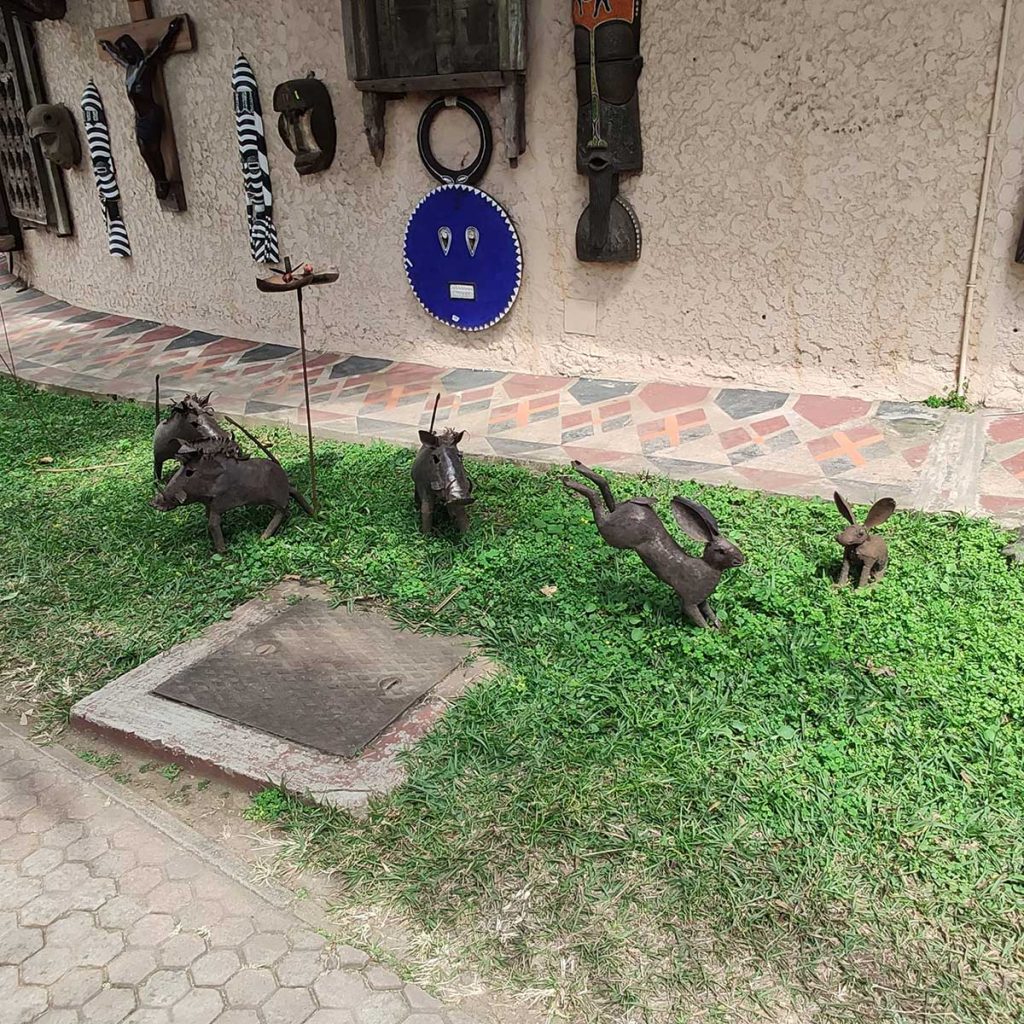
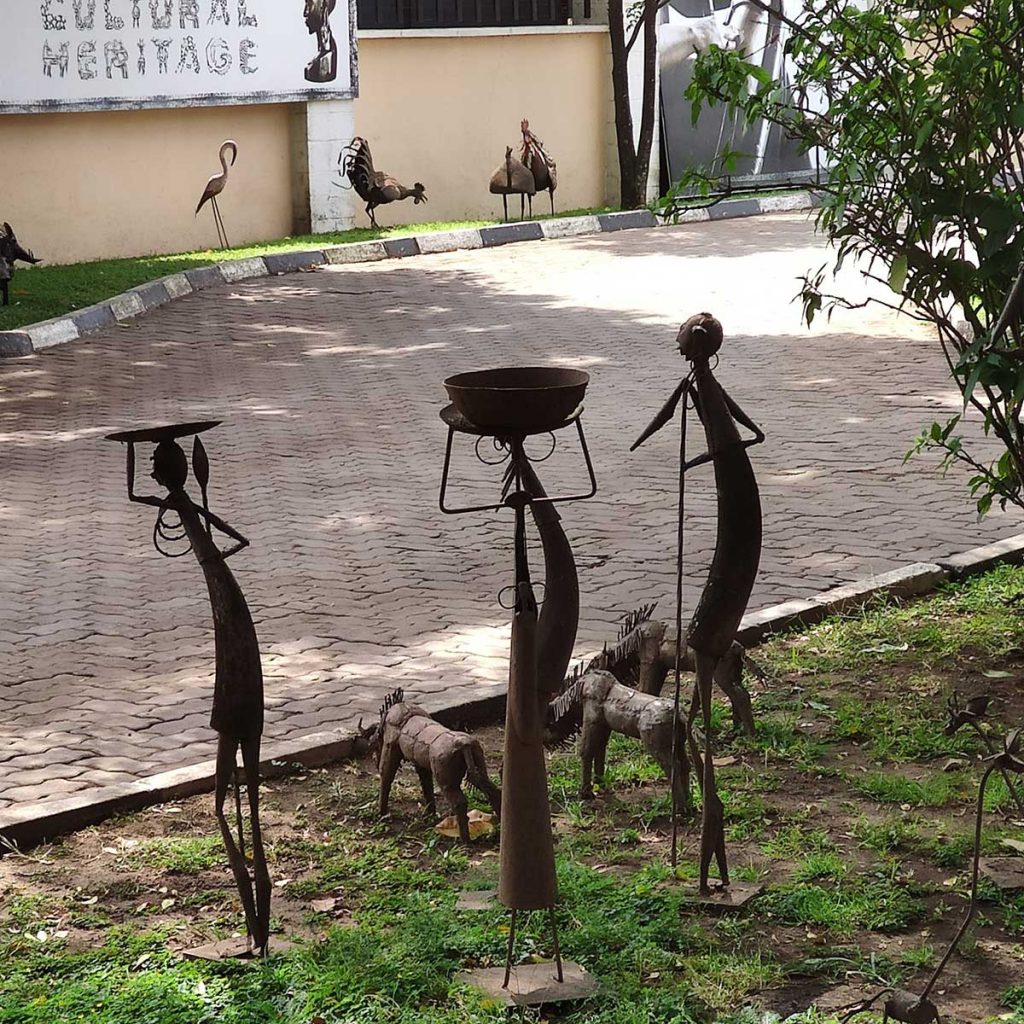
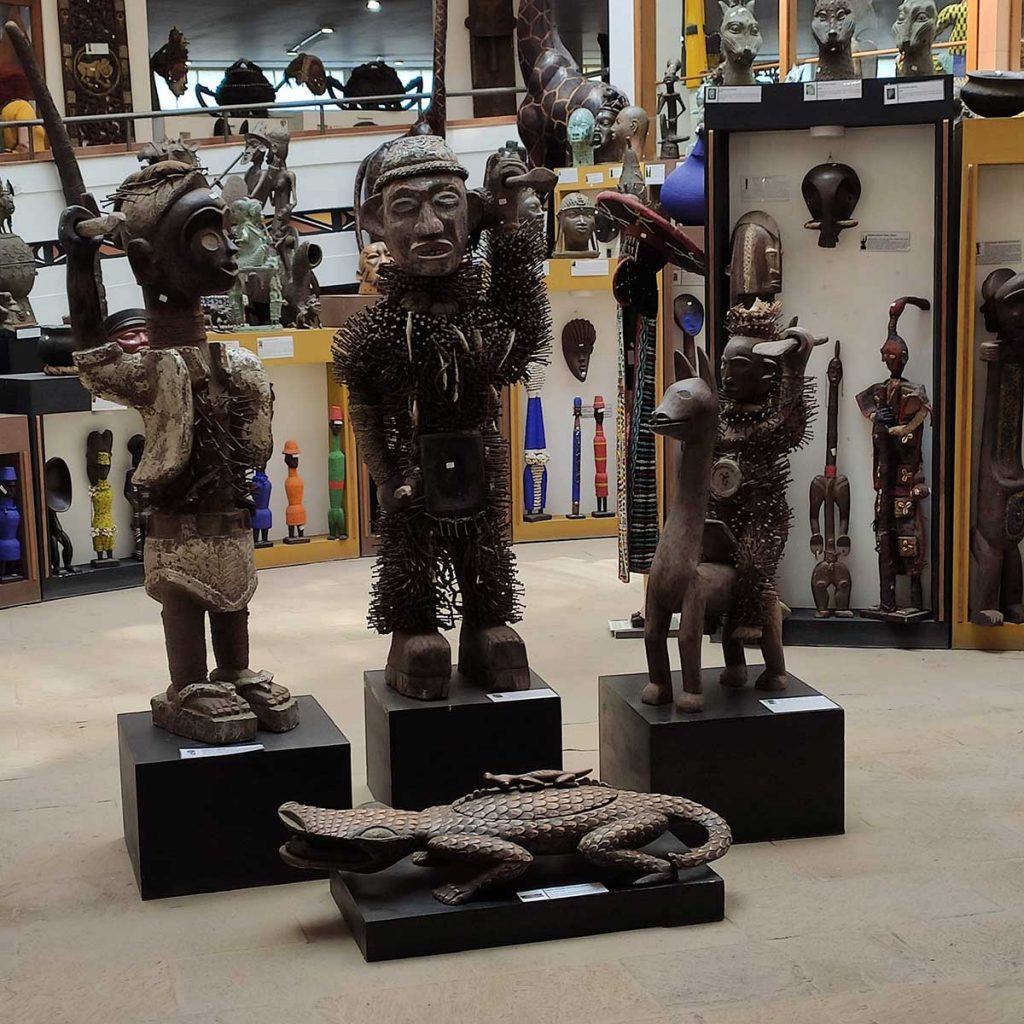

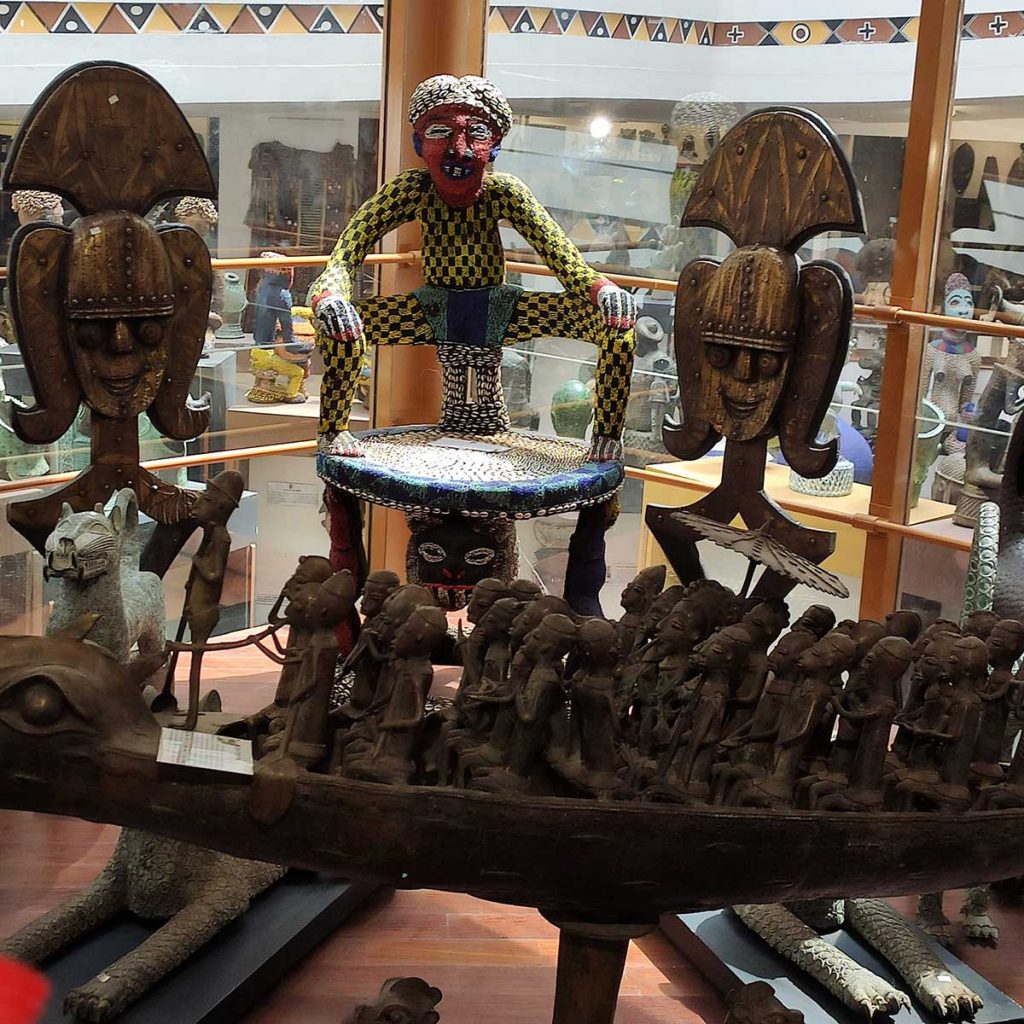
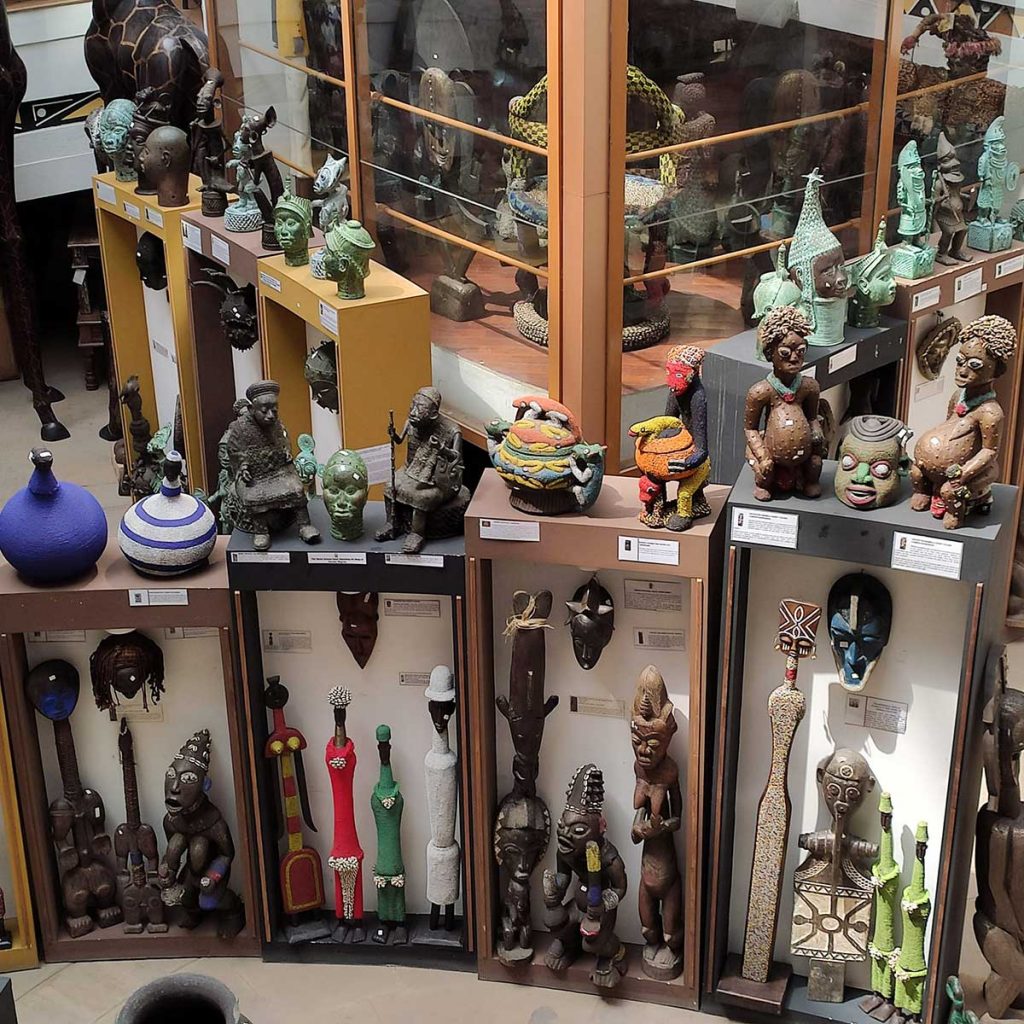
But time was running out, so we hurried back to the hotel, quickly loaded our luggage, had to skip the lunch we were entitled to (which was for the best, as we had been overfed), and rushed to the airport. Here, our group split up: two of our company continued on to Zanzibar, while I headed home.
By the way, on the way to the airport, we saw a beautiful Catholic church with a sign pointing towards it that read “konisa” (church), a word that clearly originates from “knesset.” It likely came via Ethiopia. We also spotted a school labeled “shule” instead of “school,” as elsewhere. This name has persisted in some places since the time when nowadays’ Tanzania, which was then called Tanganyika—was a German colony.
The Swahili language, the official language of Tanzania—where every ethnic group speaks its own native language—contains many Arabic loanwords. For example, the country’s president is referred to using the Arabic phrase “rais wa jamhuri.” On the streets, you frequently hear words borrowed from Arabic, like “salam,” “shukran,” and “souk”. Interestingly, they adopted “shukran” for “thank you,” but did not bother to borrow an Arabic equivalent for “not at all.”
Now it’s time to sum up. The overall impression of this trip is undeniably positive. The combination of traveling around the country and experiencing a safari allowed us to get a relatively complete picture of life in Tanzania and get to know its cheerful, friendly, and kind-hearted people. I don’t have enough experience to state that Tanzania is the most beautiful country in Africa, but one thing is certain: it is incredibly diverse and offers countless opportunities for travelers.
Challenging? Yes. You’ll eat a pound of dust—absolutely. But you’ll also gain a ton of unforgettable memories. Our trip organizer, an Israeli who has lived there for about ten years, showed us such a wealth of possibilities that I already want to return. But now, it’s time to board, and all that’s left to say is: “Asante, Tanzania! Kwaheri” – “Thank you, Tanzania! Goodbye.”

